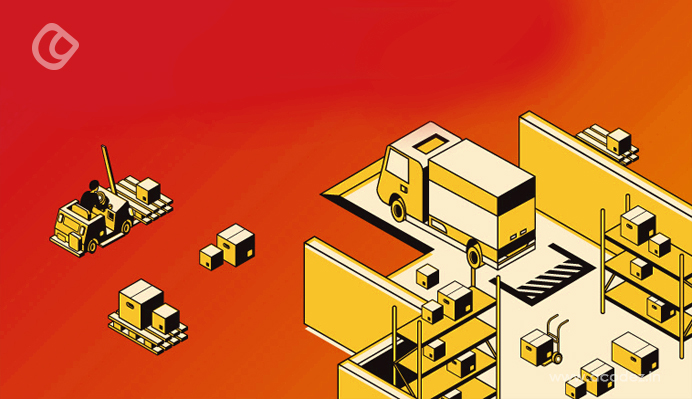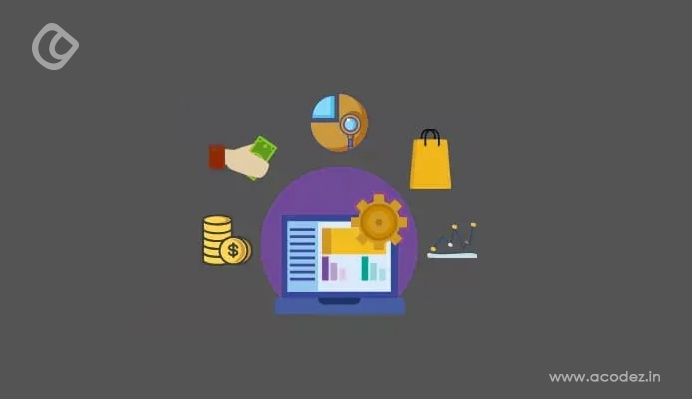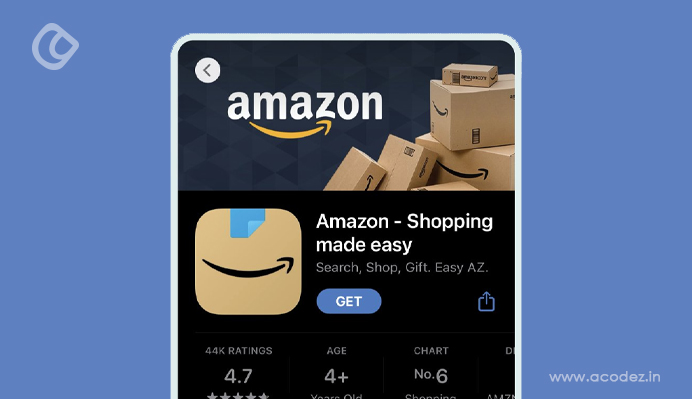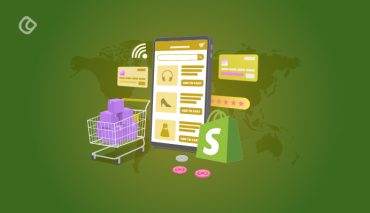Finding items for your e-commerce website may appear to be simple; simply locate a supplier, import, and sell your product. However, in reality, the process is far more complicated. Finding good quality products at reasonable rates with reasonable profit margins necessitates extensive research and a lot of trial and error.
In this article, we’re going to explore what product sourcing is, each stage of the product sourcing journey, different sorts of product sourcing techniques, and ultimately, how to evaluate and market your items once you’ve sourced and delivered them.
What Is Product Sourcing?
Before you start your e-commerce product sourcing journey, it’s important to acknowledge exactly what it entails.
Product Sourcing is the process of finding items – typically wholesale – for resale, either to a physical location or on an e-commerce website. The task can be fun and exciting as well as daunting and challenging depending on how much experience you have doing it. You’ll probably find that some products will be easy to source, while others might take time and effort before they pay off.
In addition to the idea behind product sourcing being locating goods for reselling, there are several other factors to consider:
- Where the goods will be coming from – whether overseas or locally manufactured based on factors such as ease of access, speed of importing, and cost
- How the goods will be sourced – getting them at wholesale prices requires either building relationships with suppliers or using trade shows to locate items in bulk quantities direct from manufacturers. Sometimes you may find that there’s no way to get them at reasonable prices since most wholesalers will sell to retailers at double or triple their item costs
- What your selling price is going to be – if you’re sourcing locally then it should be easy enough to work out how much money you’ll make per item by doing a little quick math based on your markup percentage. However, coming up with pricing for imported goods can prove to be tricky since market rates fluctuate all the time and wholesale rates are constantly changing too.
- Who the goods are intended for – the age group, gender, and tastes of your target market should factor into your decision-making process when choosing items to sell since you’ll only want to go after products that will be profitable enough for them while still being desirable.
The Product Sourcing Journey
The process of product sourcing has six stages:
1. Setting goals and strategy for your business.
2. Identifying which suppliers you want to use; where they are located; what products you will sell; how much profit you want to make; and which countries’ legal systems your goods need to adhere to, among others.
3. Negotiating with suppliers and signing contracts (if necessary). Make sure all contacts and contracts are in writing as this makes future updates easier. You can even write a non-disclosure agreement, which prevents the supplier from disclosing that you’re working together or discussing information about their business practices etc, depending on your needs.
4. Evaluating and ordering the products – this is where finding a supplier who offers competitive wholesale rates and provides flexible shipping terms comes in handy since your business will need to be able to handle sharp increases in inventory at any time, as well as frequent product arrivals, without warning. You’ll also want to look over samples of the product so you can verify the quality before finalizing your purchase agreement.
5. Payment – once you’ve received all your goods and checked them over for quality, you should pay your suppliers promptly. If they’re going to ship internationally then it’s probably best if you use a wire transfer unless otherwise discussed with them beforehand; cash on delivery isn’t recommended due to fraudulent practices which may arise.
6. Getting your product onto store shelves – this involves advertising, pricing, and getting the right amount of supply for demand (which you’ll want to test first). You’ll also want to start creating a brand sense online or through social media by using specific keywords or hashtags that consumers can use when searching for goods like yours.
Product Sourcing Techniques
The following are some of the most widely used product sourcing techniques:
Buying for retail
This is the easiest of all sourcing techniques because it’s exactly what you are doing when you are buying items from a store or online retail website. You decide on an item that you need, purchase it at the price set by the owner (wholesaler) of that product and then re-sell it to consumers at your own price.
Wholesaling is very different from wholesaling in that wholesalers only buy items in bulk quantities which they have no use for themselves while retailers can buy any quantity they wish, especially if they have some kind of promotion going on.
Contacting manufacturers directly
Here you contact makers directly and place orders for their products but before you can do that you need to find out who makes what and where. Some of the ways to do this include:
- Searching online directories such as ThomasNet (which is a directory for American manufacturers) or the Global Sources app (for Asian manufacturers).
- Browsing through trade magazines in your area. The Wall Street Journal’s website has an extensive list of business publications sorted by category which may give you some ideas too.
- Getting insider information from people in your network or people whose opinions you value since they are likely to know what goods are popular at this time, whether there are any companies selling them already, and how well they sell during specific months/seasons, etc.
Participating in trade or business shows
Here you can meet sellers that are looking for buyers just like you and hopefully strike up beneficial deals. The most popular of these shows include:
You can sign up on their websites to receive updates about their upcoming events or get an exhibitor pass if you want to check out what they’re like in person beforehand. Some of these organizations hold several events every year so keep your eyes peeled for any that sound interesting to you!
Using a trading platform or agent
You can sign up for online trading platforms where you get access to a huge network of buyers and sellers from all over the world which will make it easier for you to find the products that you need. These sites also have various tools which they allow their members to use on their own websites in order to conduct transactions with other member businesses more effectively.
The most popular of these include Alibaba, Tradekey, Global Sources, iBotta, etc. You can do a general search for them by putting “global trade platform” into Google and looking through the results it shows since there are many different companies offering this service but not all of them work well so be sure to sign up with one that has a good reputation.
Investigating your favorite local stores
This is useful if you are looking for goods in a certain area or city but can be used anywhere because big retail chains often have their warehouses located near the places where they do business all over the country. All you have to do is walk into one of these stores with a notepad and start taking down essential information like whether they will sell items in any quantity, how much it costs them to ship items to customers etc.
Using social media
Social media can help you find anything that interests you if people share it online so just put “where to buy ____ near me” into Google or look up on Facebook marketplaces then go check out those pages for more information.
Searching with Google Shopping
This is a helpful website since you can put in the keywords of whatever product it is that you’re looking for and see all the online stores selling them as well as how much they charge and which ones offer free shipping!
Utilizing Amazon.com
This is one of the most popular shopping websites on the internet and it’s easy to find anything you want on there because their search results can be filtered by many different criteria such as price range, customer ratings, number of reviews, etc. That said, Amazon only sells goods from third-party sellers so if any issues come up during your transactions with them then Amazon will not help you much.
Investigating your favorite local malls
This is a smart move if you have the time because most malls have their own webpage where you can look at all the stores that are located in them, which ones offer products similar to what you’re looking for and which of those sell online as well. After that, just stop by your local mall with a notepad and ask to speak with someone from customer service for more information about places that do business there since you never know what tidbits of knowledge they might let slip!
Once you’ve taken down all this information then it will be easier for you to narrow down your list of potential suppliers so just follow these simple steps:
- Look up on Google or Alibaba their public email addresses
- Send them a message inquiring about the products they sell and asking if they would be willing to do business with you
- Compare their prices, shipping fees and payment options so you know which ones are cheaper and easier
- Contact your potential supplier of choice to place your order!
Conclusion
All in all, finding the right suppliers shouldn’t be too hard if you are able to make use of these helpful tips. With this guide, you’ll be able to find the products that you want and get them for affordable prices without much hassle. Now, what are you waiting for? Go out there and start sourcing today!
Acodez is a renowned web development company and web application development company in India. We offer all kinds of web design and Mobile app development services to our clients using the latest technologies. We are also a leading digital marketing agency in India, providing SEO, SMM, SEM and Inbound marketing service at affordable prices. For further information, please contact us.
Looking for a good team
for your next project?
Contact us and we'll give you a preliminary free consultation
on the web & mobile strategy that'd suit your needs best.









